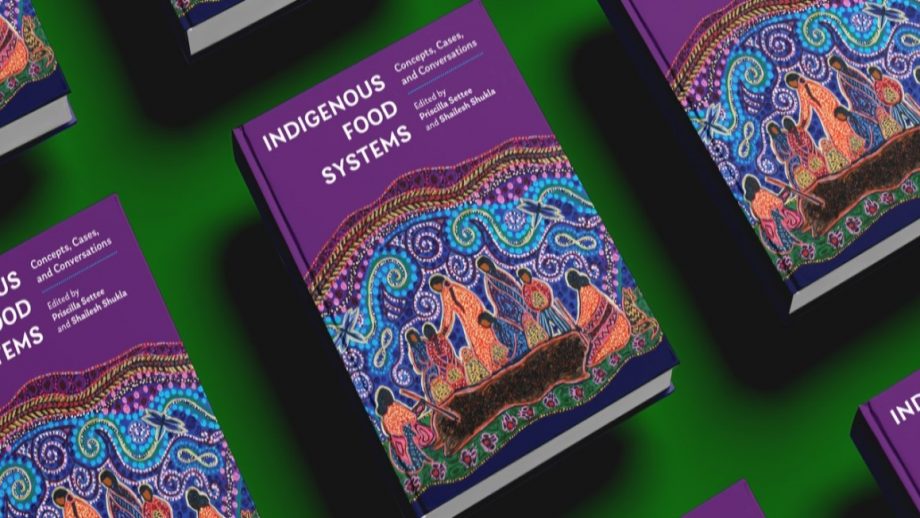A group of University of Winnipeg students learned ethnobotany from classroom instruction, Indigenous elders, and herbalists this summer, during a unique field school held at Medicine Eagle Lodge in the Keeseekoowenin First Nation near Riding Mountain National Park.
I loved learning from the Elders, having the forest as my classroom, and sleeping in a teepee at night with a fire going.
Nykola Dudeck
该课程在过去六年中一直在运行,是由副教授设计的Dr. Shailesh Shukla,土著治理硕士。他的教学和研究兴趣范围广泛在土著知识系统,土著和传统食品,食品主权,民族生态学,参与式治理,基于社区的保护,基础保护,代际传播以及土著知识系统中的学习。亚愽娱乐app
Shukla说:“本课程通过编织土著人民和智慧,从土著长者和西方对田野民族植物学和草药主义的理解中编织土著世界观和智慧,从创造性地和协同结合了艺术和科学。”“许多学生告诉我,在参加这门课程之后,他们的观点和看植物的方式就会改变。”
土著研究,商业和环境研究的学生梅根·林德尔(Megan Lindell)说,该课程超出了她的期望。它展示了她的不同知识方式,并睁开了眼睛,与她以前没有理解的植物(尤其是雪松)的关系。
“I got much more out of this class, and through the time on the land, than I could have ever hoped or dreamed for,” she said. “We live in a beautiful place and there is so much more to it than most know. If we take step back and understand what these plants are here to do, I truly believe we can live better lives that are full of more love and gratitude.”
Shukla leads students through seven days of on-campus instruction before heading outdoors for four days of land-based learning centred around 48 local plants used in medicine, ceremony, and traditional foods by Indigenous communities in Canada and elsewhere.
It was the land-based learning component that drew education student Tonya Gray to the class. Gray hopes to return to Medicine Eagle Lodge to continue learning, and to assist the Elders with future plant medicine camps.
“This class gave me the knowledge and experience necessary to access land-based education practices, and the confidence to bring this style of education to my own field-study class in the near future,” she said.
在她的最后一个项目中,格雷创建了植物卡,详细介绍了她对红木木,蔓越莓,黑色电流和钻石柳树的了解。
“They look professional and I will use them in my teaching in the future,” she said. “These four plants were selected for me, and they resonated deeply with my practice and learning throughout the course.”
Shukla has seen first-hand how important it is for students to hear Indigenous voices and perspectives alongside dominant academic knowledge. As students go on medicine walks, they listen to the stories of elders and learn traditional uses and meaning of plants, as well as the Indigenous protocols for sustainable use and conservation. In the process, they develop a newfound respect for Indigenous plant knowledge.
“我喜欢从长老那里学习,将森林作为我的教室,晚上在Teepee中睡觉,并在夜间睡觉,”历史和土著研究学生Nykola Dudeck说。“我现在对植物有更多的尊重。在您从地球上回馈地球非常重要。”
As one student presented on her learning during the final class, she talked about how the course changed the way she looked at the goldenrod “weeds” growing through cracks in the sidewalk near her urban home.
“Goldenrod thrives in diversity,” she said, explaining how it has been used historically as a folk remedy to reduce joint pain and muscle spasms, among other benefits.
土著民族植物学野外学校(IS-3201)是有资格获得Uwinnipeg的59门课程之一土著课程要求,这确保了所有来世的本科生学习土著人民,并在学习期间接触土著观点和世界观。
UWinnipeg students may choose from a number of courses in which the greater part of the content is local Indigenous material — derived from, or based on, an analysis of the cultures, languages, history, ways of knowing, or contemporary reality of the Indigenous peoples of North America. VisitIndigenous UWinnipeg有关满足Uwinnipeg土著课程要求的完整课程列表。






